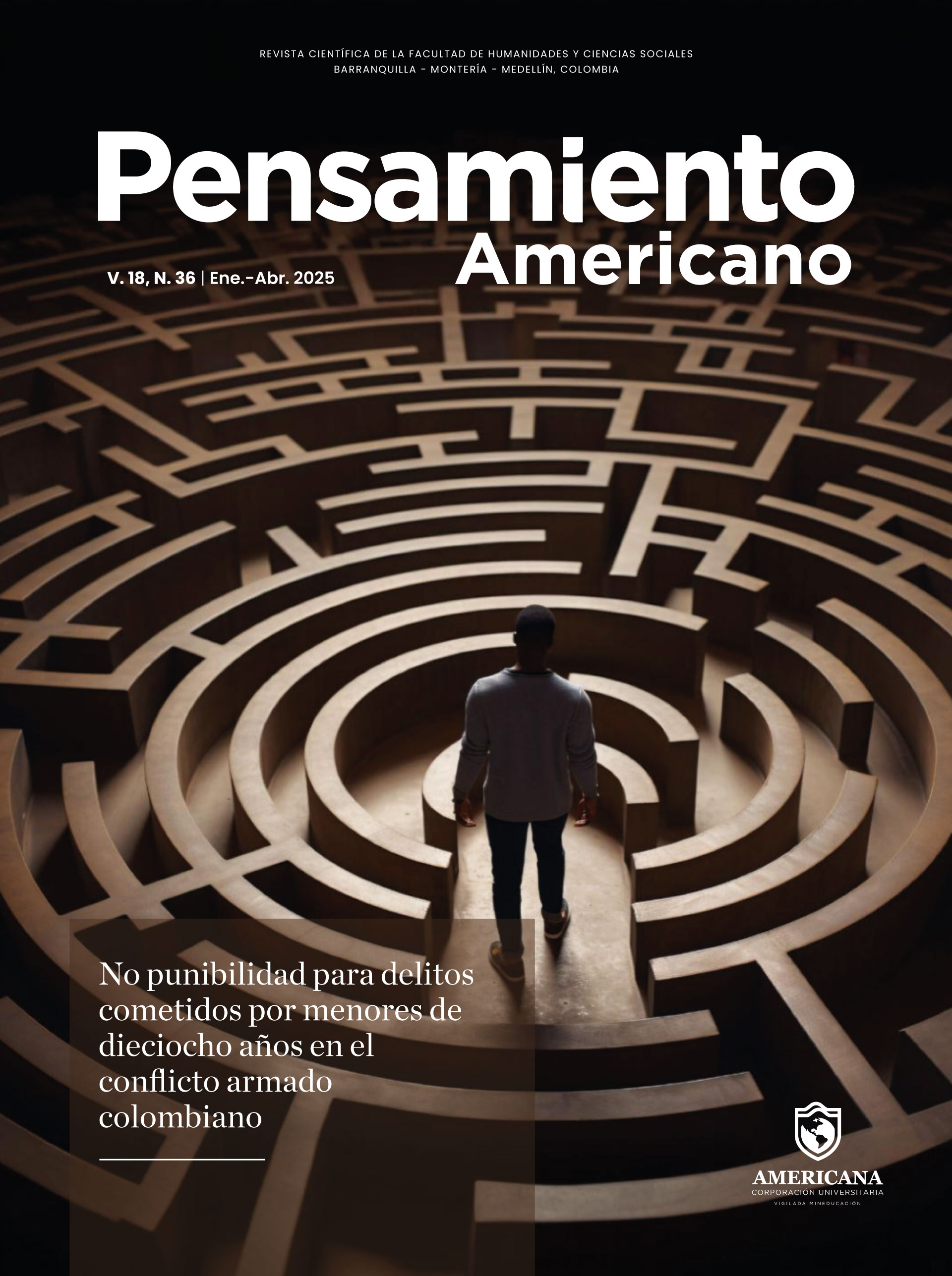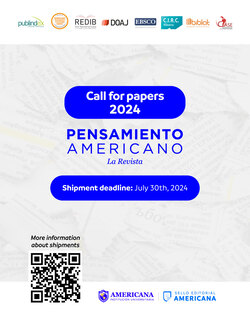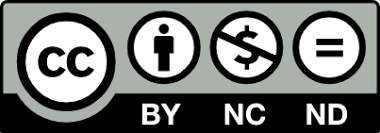What is being done in research on inclusion? Understandings of research on inclusion in Education and Mathematics Education
DOI:
https://doi.org/10.21803/penamer.18.36.787Keywords:
Ableism , Inclusion in Education,, Inclusion in Mathematics Education, Person with a disabilityAbstract
Objective: This article aims to understand how inclusion is being addressed in research on education and mathematics education. Methodology: An interpretive study was conducted, which allowed us to identify convergent aspects for understanding the issues at hand. The Scopus database was used to select articles due to its scope and impact, and searches were conducted in the Capes thesis and dissertation catalog, the Digital Library of Theses and Dissertations, and the UNESP Institutional Repository. The terms “inclusion,” “inclusion in education,” and “inclusion in mathematics education” were used for this search, considering the period from 2018 to 2022. Results: The interpretation of the works led to the development of three thematic categories: inclusion as a right guaranteed by law; inclusion as an attitude; and inclusion as recognition of social barriers. Conclusions: The discussion of these categories concludes that ableist prejudices still exist in research on disability. This is evident in the focus on disability rather than on the social conditions that do not guarantee the “tools” that enable the rights of persons with disabilities.
Downloads
References
Álvarez-Delgado, J. et al. (2022). “Three Intervention Programs in Secondary Education on Attitudes Toward Persons With a Disability. Frontiers in Psychology, 13.
Amatuzzi, M. M. (2009). Psicologia fenomenológica: uma aproximação teórica humanista. Estudos de psicologia, 26, pp. 93-100.
Belmonte, M., & García-Sanz, M. (2022). Crisálidas entre mariposas, evaluando concepciones sobre discapacidad intelectual. Universidad y Sociedad, 14(S1).
Blanco, T. et al. (2022). Prospective primary teachers’ didactic-mathematical knowledge in a service-learning project for inclusion. Matematics, 10, p. 652.
Brasil. (1988). Constituição da República Federativa do Brasil.
Brasil. (23 de Dezembro de 1996). Lei nº 9.394, de 20 de dezembro de 1996. Dispõe sobre as Diretrizes e Bases da Educação Nacional. Brasilia: Diário Oficial da União.
Brasil. Ministerio de Educação . (2008). Política Nacional de Educação Especial na Perspectiva da Educação Inclusiva (LDB). Brasilia, DF: MEC.
Cobeñas, P. (2020). Exclusión educativa de personas con discapacidad: Un problema pedagógico. REICE: Revista Iberoamericana sobre Calidad, Eficacia y Cambio en Educación, 18(1), pp. 65-81.
Colombia. Ministerio de Educación Nacional. (1994). Ley General de la Educación 115. Bogotá.
Colombia. Ministerio de Educación Nacional. (1996). Decreto 2082 por el cual se reglamenta la atencin̤ educativa para personas con limitaciones o con capacidades o talentos excepxionales.
Corte constitucional. Constitución Politica de Colombia. (1991). Derecho a la Educación. Articulo 67. .
Faustino, A. C. et al. Microexclusion in Inclusive Mathematics Education. In:
Kollosche, D. (eds.). Inclusive Mathematics Education: State-of-the-Art
Research from Brazil and Germany. Springer, 2019. P.55-70
Fernandes, S. H., & Healy, L. (2019). Educação Matemática e inclusão: abrindo janelas teóricas para a aprendizagem de alunos cegos. Revista Educação e Cultura Contemporânea, 5(10).
Ferro, A. (2021). A colaboração entre professoras para ensino da Matemática em sala de aula com estudante autista.
Fraz, J. N. (2018). Tecnologia assistiva e Educação Matemática: experiências de inclusão no ensino e aprendizagem da Matemática nas deficiências visual, intelectual e auditiva. Revista de Educação Matemática, 15(20), pp. 523-547.
Lima, P. C. (2022). investigación Imaginação pedagógica e educação inclusiva: possibilidades para a formação de professores de Matemática.
Marcelly, L. (2015). Do improviso às possibilidades de ensino: estudo de caso de uma professora de Matemática no contexto da inclusão de estudantes cegos.
Merleau-Ponty, M. (2018). Fenomenología da Percepção. São Paulo : WMF Martins Fontes.
Miranda, A. E. (1999). Manifestação da espacialidade de pessoa desprovida de visão.
Nery, E., & Sá, A. (2020). Educação em direitos humanos, educação matemática crítica e educação matemática inclusiva: interseções e desafios. Revista Interdisciplinar de Direitos Humanos, 8, pp. 89-115.
Nery, É., & de Sá, A. (2019). A deficiência visual em foco: estratégias lúdicas na Educação Matemática Inclusiva. Revista Educação Especial, 32, pp. 1-26.
Otondo, M., et al(2022). Formación inicial del profesorado de Matemática en inclusión educativa: análisis de los perfiles formativos en las universidades chilenas. Formación universitaria, 15, pp. 133-142.
Pereira, T. (2021). Aspectos sobre o ensino de Matemática e a inclusão de estudantes cegos: reflexões a partir de falas e práticas de professoras.
Rodríguez, L, L., et al. (2022). Impacto de los actos comunicativos dialógicos en la argumentación matemática del alumnado con trastorno del espectro autista. Un estudio de caso sobre educación inclusiva. REMIE. Multidisciplinary Journal of Educational Research, 12(2), pp. 115-145.
Rojo-Ramos, J. et al. (2022). Analysis of the Attitude of Spanish Physical Education Teachers towards Students with Disabilities. International Journal of Environmental Research and Public Health, 19(9).
Rosa, E. A. (2019). Escolas inovadoras e Criativas e inclusão escolar: um estudo em educação Matemática .
Souza, R. M. (2015). Deficiencialismo: a invenção da deficiência pela normalidade.
Texeira, C. D. (2018). Matemática e inclusão: para além dos resultados. Revista de Educação Matemática (REMat), 15(20), pp. 389-408.
UNESCO. (2005). Guidelines for inclusión: Ensuring Access to Education for All. París: UNESCO.
Yerga-Míguez, M., et al. (2021). La excelencia académica de mujeres con discapacidad visual en la Universidad, aportes de la teoría fundamentada. Revista Colombiana de Educación(83).
Downloads
Published
Issue
Section
License
Copyright (c) 2025 Pensamiento Americano

This work is licensed under a Creative Commons Attribution-NonCommercial-NoDerivatives 4.0 International License.
The author or authors of an article accepted for publication in the Journal Pensamiento Americano will transfer all of the patrimonial rights to the American University Corporation free of charge, within which are included: the right to edit, publish, reproduce and distribute both print media as digital, in addition to include in article in international indexes and / or databases, likewise, the Editorial Seal is authorized to use the images, tables and / or any graphic material presented in the article for the design of covers or posters from the same magazine. By assuming the patrimonial rights of the article, it may not be partially or totally reproduced in any printed or digital media without its express permission.
AUTHORITY ASPECTS
For the Pensamiento Americano Journal, all the authors of an article have made substantial contributions to the research and the manuscript, and they share the responsibility when the article presents errors, fraud in some way or violations of copyright.
After submitting an article, the journal does not accept the addition, deletion or change in the order of the authors, in addition we reserve the right to release the article when it has been submitted to the journal and under no circumstances will American Thought accept the article. withdrawal of an article during any phase of the editorial process






